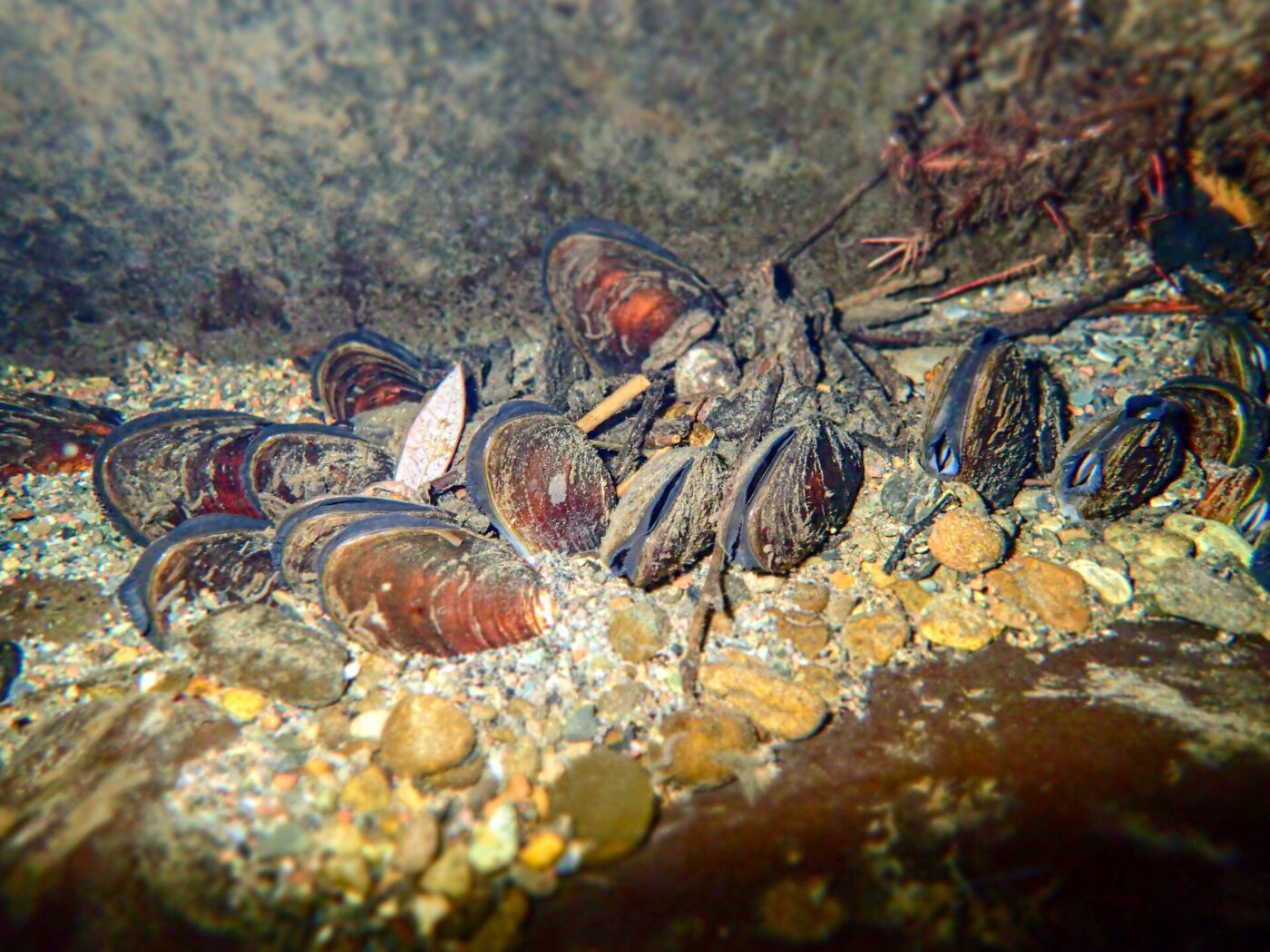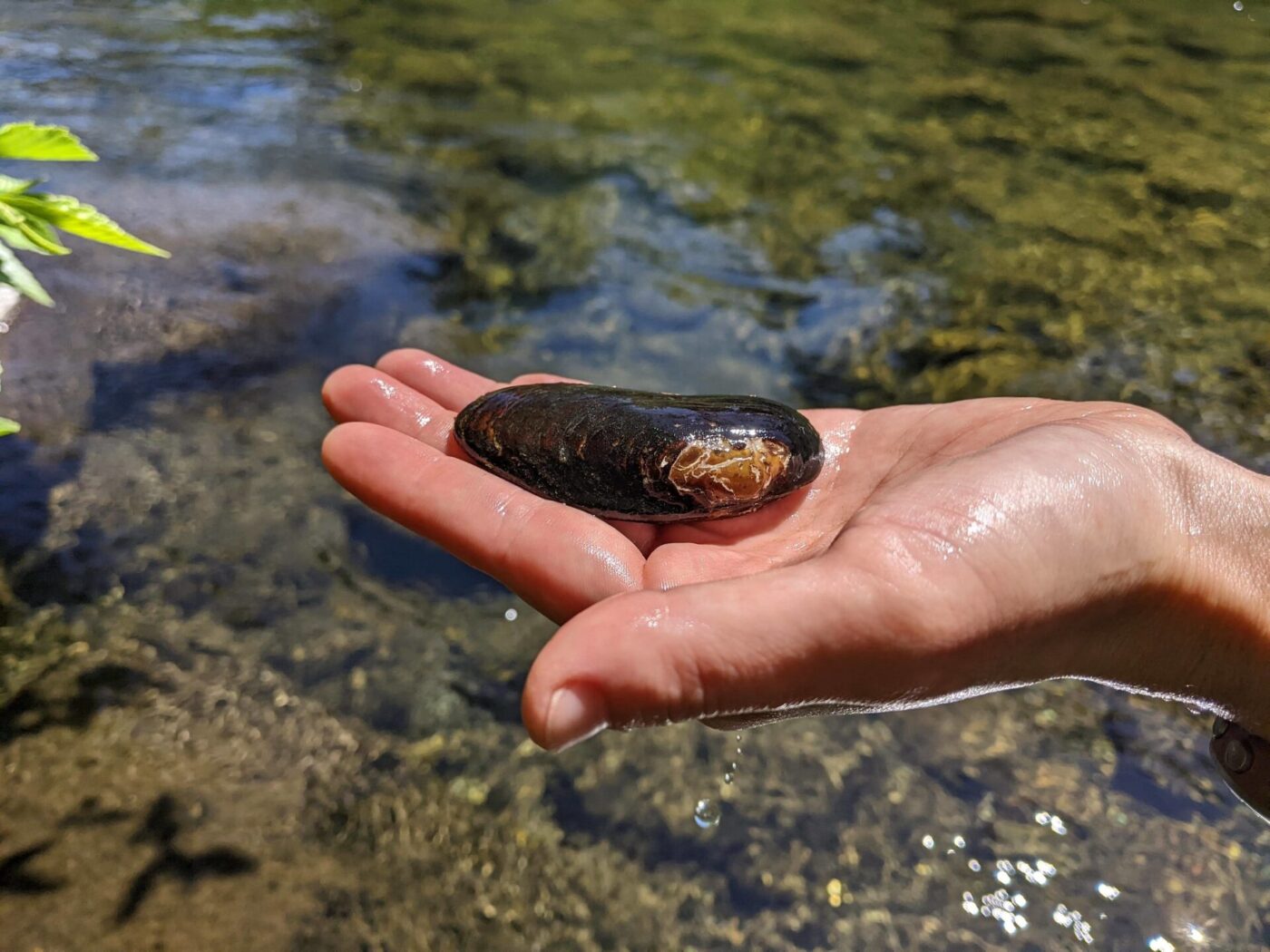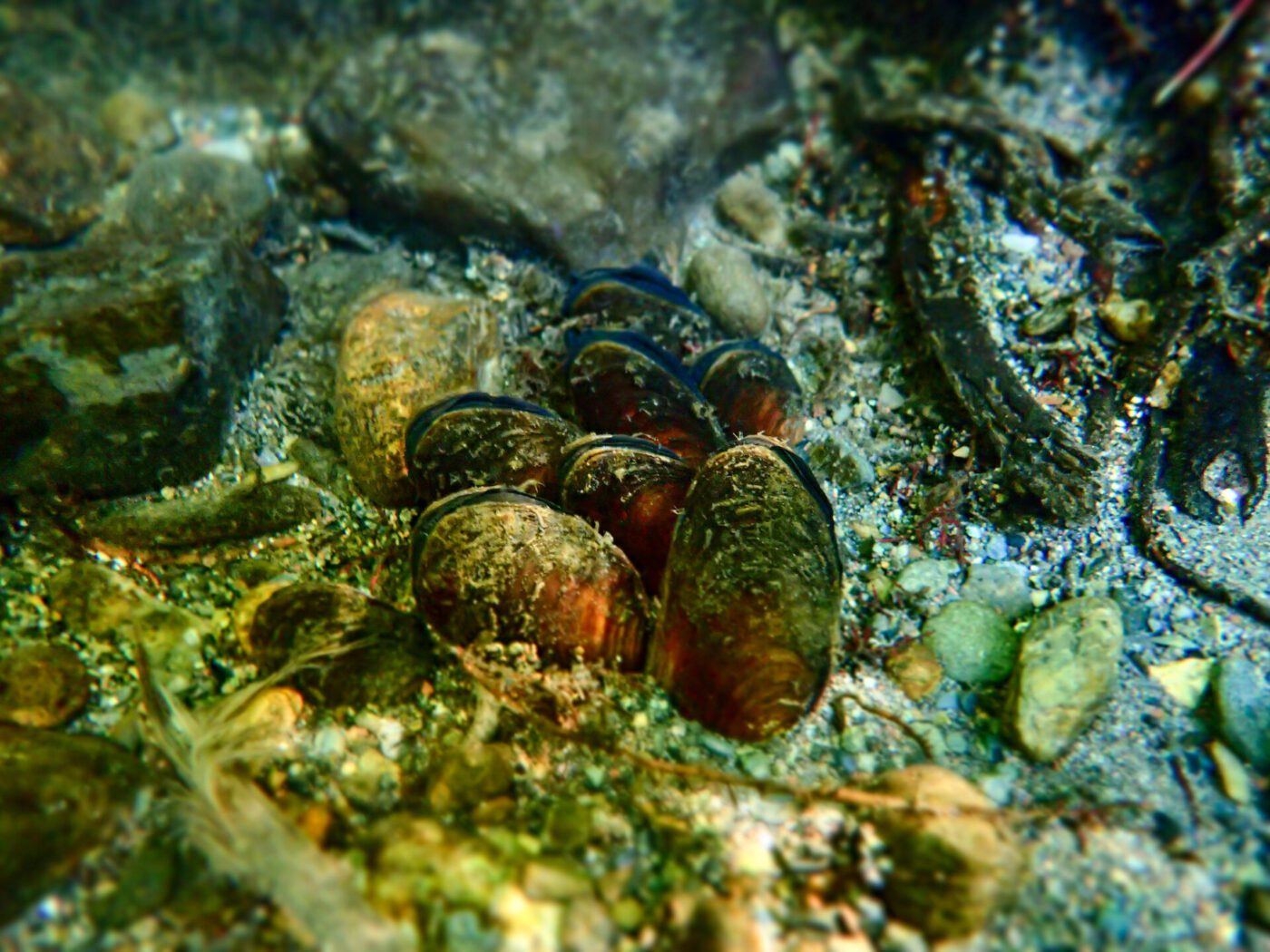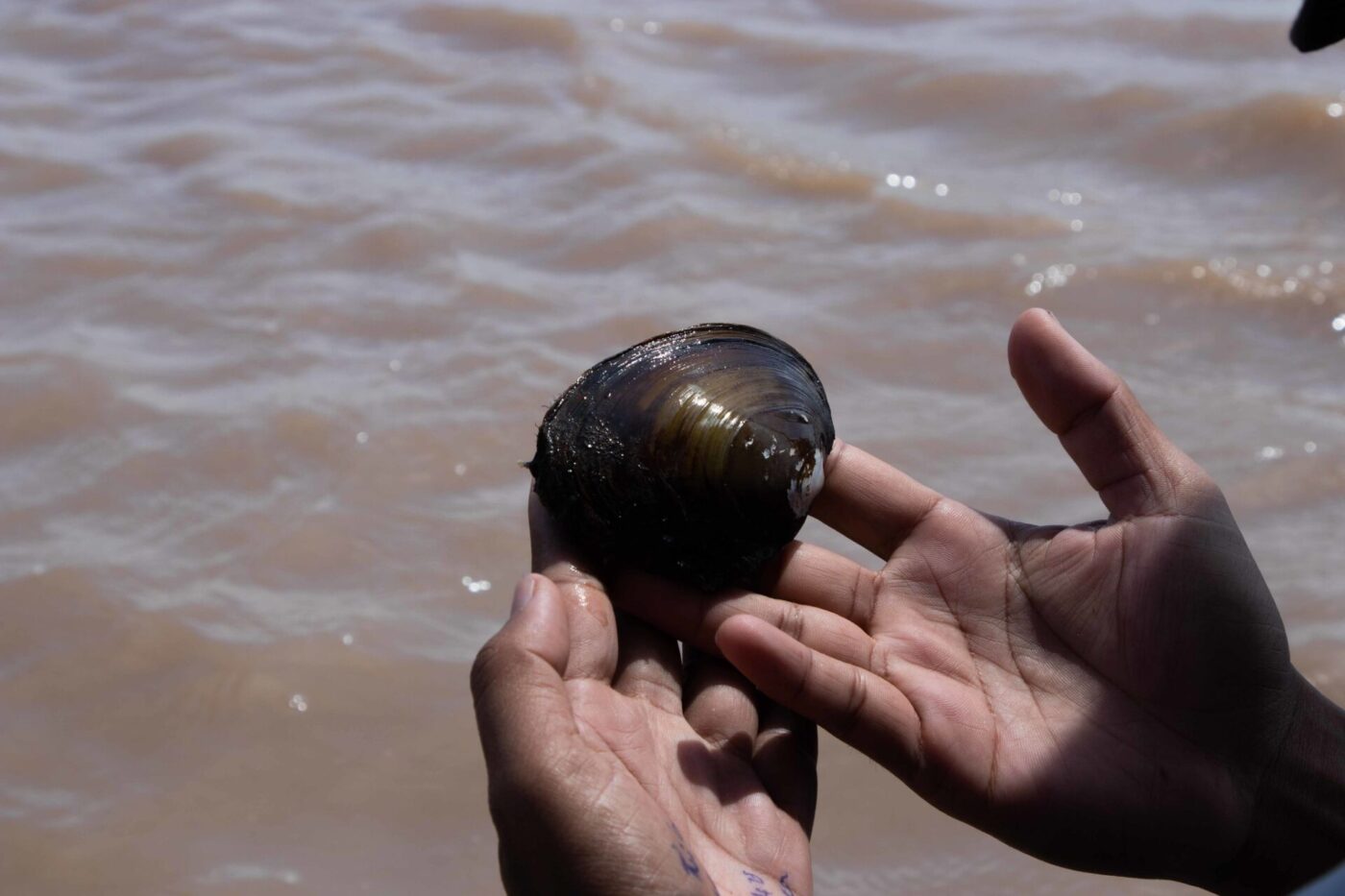Monday November 20, 2023

Mussels often fly under the radar in the fisheries world because, well, they aren’t fish – though, they are essential players in marine and freshwater ecosystems. Mussels are shell-bound, sedentary organisms that rely heavily on good water quality, physical habitat, and fish presence and interactions. They are filter feeders, consuming microorganisms suspended in the water column. Mussels serve as natural water filters, removing not only nutrients but also pollutants from the water (they can filter up to several gallons of water a day). Some species can serve as bioindicators of environmental pollution, as sudden mussel die-offs may indicate an influx of pollutants into a system, while an absence of mussels from a system may indicate long-term water quality issues.

Mussels exhibit an unusual paradox in which many species are hurtling towards extinction while others are on the precipice of world domination. One mussel species recently became the first marine invader in Antarctica! The zebra mussel (Dreissena polymorpha) is another notorious invader that has spread prolifically throughout North America, fouling waters and displacing native mussels. Freshwater mussels are found on all continents except Antarctica, and North America is a hotbed of mussel diversity with nearly 300 native species, all belonging to the family Unionidae. It is thought that nearly 70% of mussels in North America are at risk of extinction for various reasons including decline of native fishes, habitat fragmentation, and invasive species introductions.

Mussels in a streambed – Big Chico Creek, California
If native mussels in North America are in dire straits, why are non-native mussels so prolific? Zebra mussels (originally from eastern Europe) belong to the Dreissenidae family which has drastically different life history traits than the native unionid mussels in North America. The biggest difference between zebra mussels and unionid mussels exists at the larval stage. Freshwater mussels have three unique life stages: larval, juvenile, and adult. After fertilization, zebra mussel larvae float freely until their juvenile life stage where they settle and secure themselves to a physical habitat for the remainder of their lives. On the other hand, unionid mussel larvae (called glochidia) must find and attach to a fish host to reach their juvenile life stage. The sheer presence and absence of fish can be a limiting factor in the number of mussel offspring that will successfully reach adulthood. Several species of unionid mussels have evolved unique tactics to increase the odds that their offspring will find a suitable host. The oyster mussel (Epioblasma capsaeformis), native to much of the southern United States, lures host fish with an enticing, brightly colored flesh lining in their shell. When the fish gets close, they clasp their shell shut on a fish’s head while releasing their larvae. After colonizing their host, the mussel larvae mature into their juvenile life stage and drop off into the surrounding habitat to finish their life cycle.

A large freshwater mussel – Tonle Sap, Cambodia
Successful mussel reproduction depends on how a mussel attracts a fish and who they choose to be their host. Some generalist mussels can parasitize several fish species while specialist mussels are limited to parasitizing only a single fish species. This selectivity puts specialist mussels at a higher risk for extirpation or extinction, as they are highly affected by any shifts in local fish biodiversity. For example, mussels that utilize far-swimming fish like gar are often separated from and unable to colonize their fish host when their habitat is fragmented. However, mussels that prefer to colonize fish with smaller home ranges have a greater chance of finding and securing a host. Additionally, most mussels exclusively utilize native fish hosts and, except for a few generalist mussel species, are unable to take advantage of introduced or non-native fishes. Mussels have evolved various approaches to successfully carry out a somewhat unconventional life history but face many roadblocks to persisting in today’s altered ecosystems. The good news, though, is that because they are inherently intertwined with native fish populations, management actions taken towards restoring and protecting native fishes will likely also benefit mussels.
Header Image: Western pearlshell mussels (Margaritifera falcata) – Big Chico Creek, California
This post was featured in our weekly e-newsletter, the Fish Report. You can subscribe to the Fish Report here.
